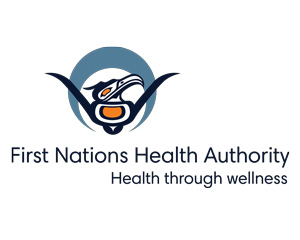Fish Samples Analysed
The First Nations Health Authority received the preliminary lab results from the fish sampling project. Salmon testing was conducted at the request of impacted First Nations and intended to provide independent and objective information regarding the safety to consume the 2014 Fraser River Sockeye.
In total, 45 fish samples were collected by First Nations harvesters. Of the fish samples submitted, 33 fish have been analysed. These include samples from both the Upper Fraser and Mid Fraser areas, submitted by harvesters from Northern Shuswap Tribal Council, Esketemc, Tl’esqox-t'in (Toosey), St'át'imc Eco-Resources, Xaxli’p, Xwisten (Bridge River), T'it'q'et, Nazko, Lhtako Dene, Nlaka'pamux Nation Tribal Council, Coldwater Band (Nicola Tribal Council). Samples were collected on the following dates (post-breach) – August 4, 6, 8, 9, 17, 18, 19, 20, 21. (see figure 2)
A sub-set of samples had liver and roe (gonads) analysed. One fish sample was excluded because it was found dead and analysis of decaying tissue may result in misleading concentrations. Samples were analysed for total metals, which includes those metals that are reported by Imperial Mines to have been discharged into the tailings pond.
Preliminary Results
These results are considered to be preliminary. Results for remaining fish samples are expected early next week. We are also waiting for results from a test (arsenic speciation) that determines the more potent form of arsenic (inorganic). These are anticipated over the next two weeks.
Figure 1: Preliminary Fish Samples
Preliminary Fish Sample Analyzed (as of September 4, 2014) |
| Post-Breach | Pre-Breach |
Muscle & Skin | 25 | 7 |
Liver | 4 | 0 |
Gonads (roe) | 2 | 1 |
Figure 2: Fish Sampling Locations

Map Courtesy - Pete Nicklin, Fish Biologist- Fraser River Aboriginal Fisheries Secretariat
How were the results reviewed?
Toxicologist Ross Wilson (Wilson Scientific Consulting Inc.) has been contracted by FNHA and has considered current safe consumption rates available from Health Canada and the World Health Organization, as well as the typical consumption levels of First Nations people. The following portion sizes have been used in developing risk-based concentrations: one bowl daily for adults (125 grams) and one-half bowl (62.5 grams) daily for toddlers. The 2008/2009 First Nations Food Nutrition and Environment Study (FNFNES) carried out in BC has data available for metals in salmon that can also be used to understand the range of normal values.
What do the results say?
For all metals other than arsenic, the fish muscle tissue concentrations are less than the values that would be safe assuming daily consumption (i.e., one bowl per day for adults and one-half bowl per day for toddlers). In the case of arsenic, FNHA is waiting for arsenic speciation results (inorganic arsenic) to be provided by the lab (i.e., in most fish, arsenic is present in the non-potent organic form but this needs to be confirmed to be the case in our samples). In the meantime, the total arsenic concentrations are in the range of normal concentrations reported in the FNFNES study. We also note that the selenium concentrations are in the normal range and are below the risk-based screening concentrations.
Although we do not have the arsenic speciation data and are awaiting further results, the data received thus far indicates that fish muscle is safe for consumption from a metals perspective. Many of the metals of concern will only pose a health risk after longer term exposure. Nevertheless, it will be important to continue to monitor fish into the foreseeable future to ensure that concentrations remain safe and the First Nation communities will need to be immediately informed if conditions change. In addition, we are waiting for further information from the mining company on whether or not other chemicals could have been released and present in fish. We anticipate being able to provide an additional update in a week.
Long term monitoring of fish will be needed to determine if fish habitat has been impacted or if future salmon runs will have accumulated the metals of concern. Working with impacted Nations, the FNHA is seeking to understand federal, provincial, and industry roles and responsibilities in terms of the longer-term monitoring and remediation needs.
For more information please visit www.fnha.ca
Download a PDF copy of this communique here. (PDF 348 KB)

